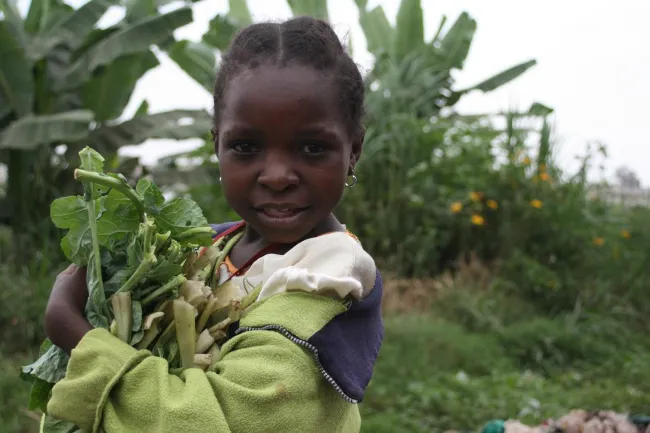A global model of how child stunting could be affected by climate change and poverty in 2030 has been developed by FCRN member Simon Lloyd of the London School of Hygiene and Tropical Medicine. By 2030, an estimated 570,000 to over one million children under 5 will suffer from stunting that can be attributed to climate change, with both greater poverty and greater climate change causing more stunting.

The study used food prices and the bottom 20% of incomes in each country to make its predictions.
Simon Lloyd told the FCRN, “The results suggest that when populations are very poor and food prices rise quickly, stunting is likely to worsen. However, when people are less poor and food prices rise more slowly, stunting may decrease. This suggests that food prices that provide decent incomes to farmers alongside high employment with living wages are likely to both reduce undernutrition and vulnerability to climate change.”
Abstract
Background:
In 2016, 23% of children (155 million) aged <5 were stunted. Global-level modeling has consistently found climate change impacts on food production are likely to impair progress on reducing undernutrition.
Objectives:
We adopt a new perspective, assessing how climate change may affect child stunting via its impacts on two interacting socioeconomic drivers: incomes of the poorest 20% of populations (due to climate impacts on crop production, health, labor productivity, and disasters) and food prices.
Methods:
We developed a statistical model to project moderate and severe stunting in children aged <5 at the national level in 2030 under low and high climate change scenarios combined with poverty and prosperity scenarios in 44 countries.
Results:
We estimated that in the absence of climate change, 110 million children aged <5 would be stunted in 2030 under the poverty scenario in comparison with 83 million under the prosperity scenario. Estimates of climate change–attributable stunting ranged from 570,000 under the prosperity/low climate change scenario to >1 million under the poverty/high climate change scenario. The projected impact of climate change on stunting was greater in rural vs. urban areas under both socioeconomic scenarios. In countries with lower incomes and relatively high food prices, we projected that rising prices would tend to increase stunting, whereas in countries with higher incomes and relatively low food prices, rising prices would tend to decrease stunting. These findings suggest that food prices that provide decent incomes to farmers alongside high employment with living wages will reduce undernutrition and vulnerability to climate change.
Conclusions:
Shifting the focus from food production to interactions between incomes and food price provides new insights. Futures that protect health should consider not just availability, accessibility, and quality of food, but also the incomes generated by those producing the food.
Reference
Lloyd, S.J., Bangalore, M., Chalabi, Z., Kovats, R.S., Hallegatte, S., Rozenberg, J., Valin, H. and Havlík, P., 2018. A Global-Level Model of the Potential Impacts of Climate Change on Child Stunting via Income and Food Price in 2030. Environmental health perspectives, 126(9), p.097007.
Read the full paper here. See also the Foodsource building block What is malnutrition? and the paper Risk of increased food insecurity under stringent global climate change mitigation policy.




Comments (0)